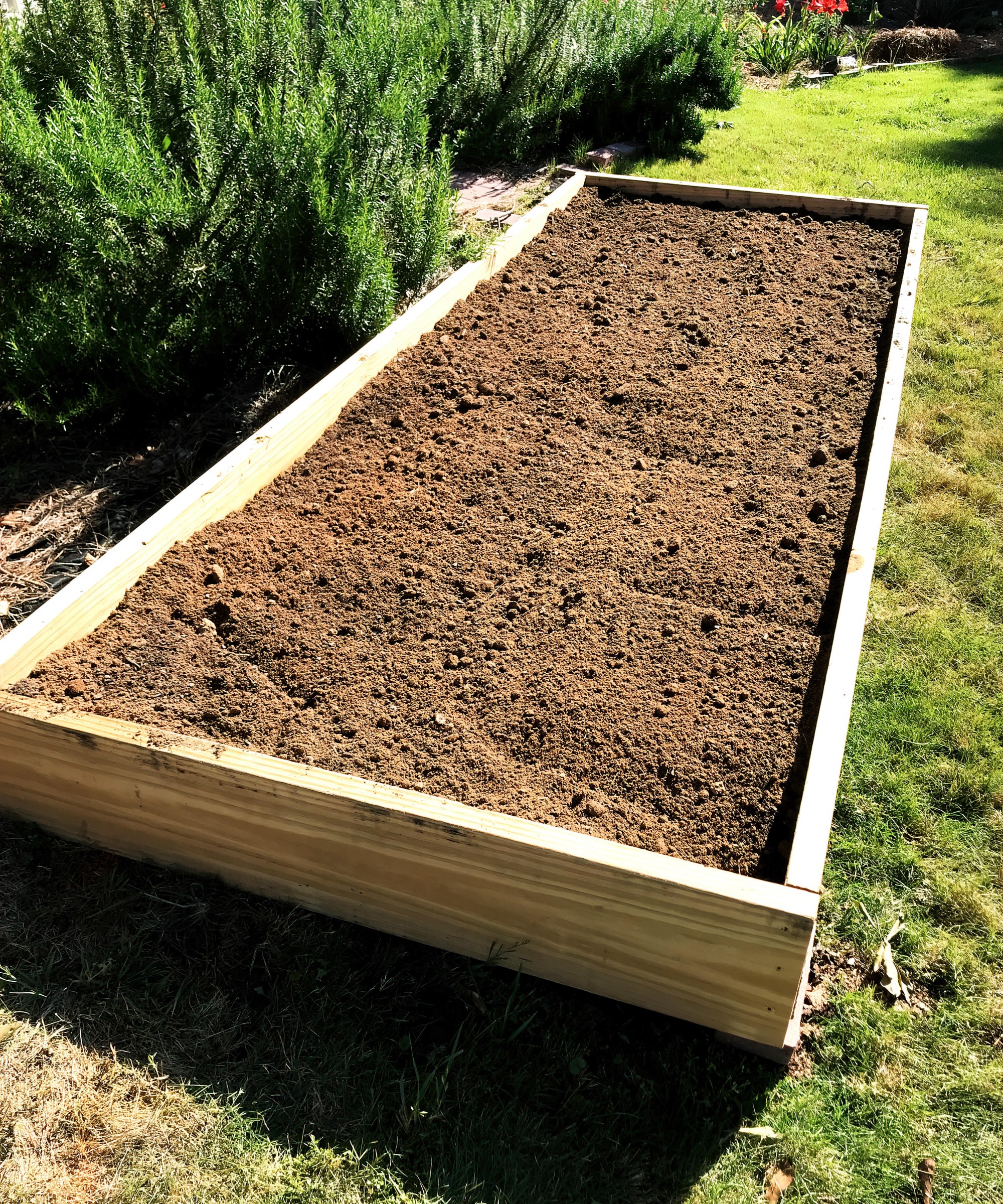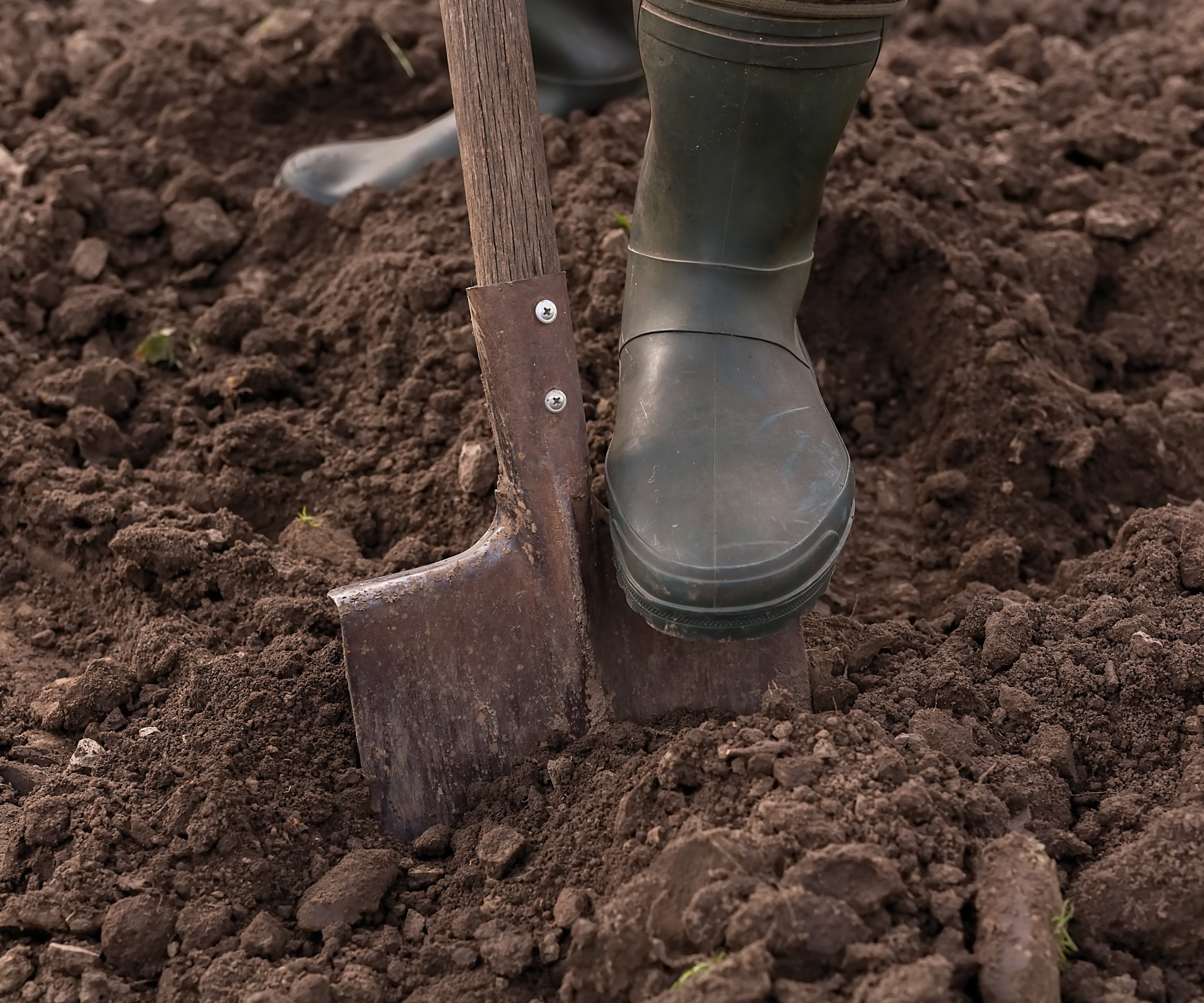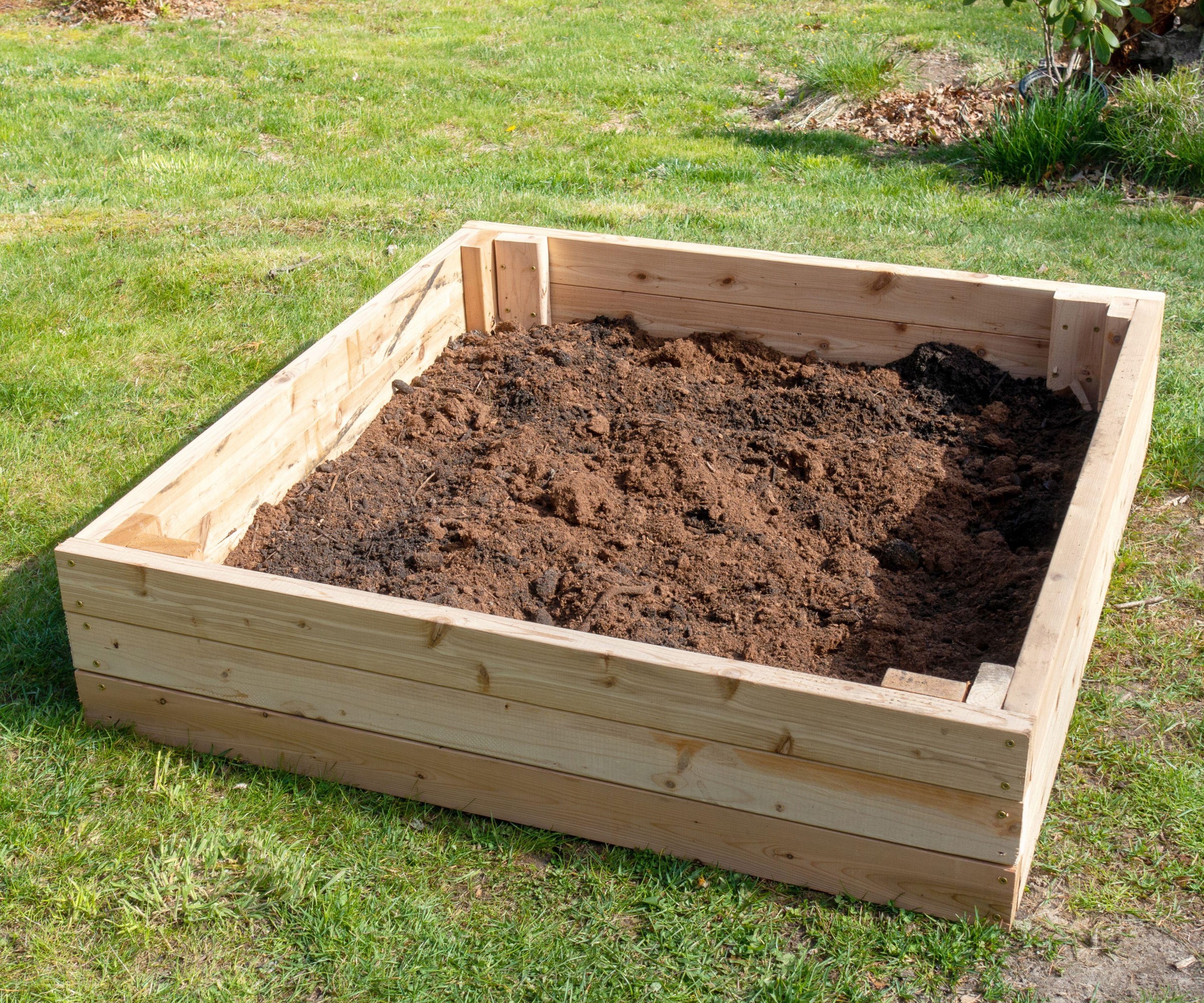How to fill a raised garden bed – expert tips to get the ideal blend of soil and materials
Discover the different ways to fill a raised garden bed and get that mix of ingredients right for your plants


Growing vegetables or flowers in raised beds gives you the opportunity to create a perfect environment for your plants. You want to ensure the contents of your bed is of a good enough quality for your plants to not only merely survive, but thrive in the bed.
There are many methods for how to fill a raised garden bed, from simply using a mix of topsoil and compost to no dig techniques of creating a bed using layers of various materials.
Raised garden beds are perfect for a wide range of plants. One of the main advantages of them is being able to control the growing medium to make it ideal for exactly what you want to grow. Getting the right mix is key to happy plants.

Raised garden beds need a mix of materials to create a rich, healthy, and structured soil
What to fill a raised garden bed with
The amount of materials required to fill a raised garden bed will depend ultimately on the height of the raised bed, which is usually from about eight inches to a maximum of 36 inches high. How wide the raised garden bed is will also dictate the amount needed to fill the space.
There is a wide variety of materials that can be used to fill a raised garden bed. The likes of homemade compost, well-rotted manure, topsoil and sand can all be used to create an environment to successfully grow plants in. Alternative materials, including logs, garden waste, cardboard, rocks, and more, can also be used in layers as part of no dig gardening techniques to build raised garden beds.
What is a good raised garden bed soil mix?
A good raised garden bed soil mix will be a combination of topsoil, compost or organic matter, and sand or grit. The combination creates a soil that has good drainage and holds onto water and nutrients, while providing all the vital nutrients for the plants. Around 30-50% of the make-up of the soil can be composed of compost, topped up with good quality topsoil and up to 20% of sand or grit for drainage.
Garden soil can be used in a raised bed, however, Alex Tinsman, a gardener from How To Houseplant, advises it is ‘important to ensure that it's not compacted or contains weeds or pests’ and to make sure you amend it. He adds: ‘It's recommended to mix garden soil with compost to improve its structure and nutrient content. Additionally, if the soil in your garden has been previously used to grow plants, it may be depleted of nutrients, and adding compost will help replenish them.’
Design expertise in your inbox – from inspiring decorating ideas and beautiful celebrity homes to practical gardening advice and shopping round-ups.
It is best to do a soil test before adding any from the backyard to a raised bed, to get a full understanding of its pH and soil type, as taking low-quality soil and adding it to a bed can be a common raised bed gardening mistake to avoid.

Soil can be dug from elsewhere in the yard, but needs to be amended
How to fill a raised garden bed
The first question to consider when filling is what to put on the bottom of a raised garden bed. There are several options available, though it is advisable to use something that can either smother weeds or boost the drainage of the bed.
Cardboard or landscape fabric – such as HOOPLE Garden Weed Barrier Landscape Fabric available at Amazon – are common choices to act as the base of a raised bed. These materials can smother weeds beneath them and are especially useful if it is a shorter raised bed or one being made directly on top of a lawn. Using a layer of rocks, gravel, sand or grit can allow for good drainage and help to prevent water from accumulating and sitting at the bottom of the raised garden bed.
On top of the drainage layer, and forming the bulk of the raised bed, comes the ingredients that will make-up the soil in the bed. Here it is wise to use a combination of compost and topsoil. You can mix in some well-rotted manure or leaf mold into the mix to further boost the level of nutrients in the soil.
Compost is high in organic matter and improves soil structure, water retention, and nutrient availability. It can either be home-made or bought in from reputable retailers to ensure it is of a high-quality and will not be full of weed seeds or other nasties. Topsoil is more balanced soil than compost yet also contains nutrients and organic matter. Widely available to buy in bags or bulk, it is commonly used for filling raised beds or making new borders.
Both compost and topsoil have benefits, however it is better to use a combination of the two to fill a raised bed rather than one or the other. Traditional approaches recommend a ratio of two-parts topsoil to one-part compost. Ali Adnan, a gardener and senior editor at The Plant Bible, outlines how there are ‘two main approaches to incorporating compost into a raised bed’ and that is mixing or layering.
He says: ‘Mixing involves thoroughly combining the compost and soil before filling the bed. This can help ensure a more even distribution of nutrients and organic matter throughout the bed. Layering involves adding a layer of compost on top of the soil and allowing it to gradually mix in over time through natural processes. Both approaches can be effective, and the choice depends on personal preference and the specific needs of the plants being grown.’
Fill the raised garden bed right to the top, as the soil will settle over time. This will give your plants the most amount of soil possible to grow in and will be massively beneficial, whether you are planning a kitchen garden, vegetable garden or cut flower garden.

Topsoil and compost are mixed together to make a rich soil
How to layer a raised garden bed
There are specific layering techniques you can use to build raised beds. These are all no dig gardening techniques and can use up lots of different materials to make up the beds.
It can mean they are cheaper alternatives to just filling raised beds with topsoil and compost – the cost of which can add up depending on the size of the beds. The minor disadvantages to some of these techniques is sourcing enough material to make the beds and whether you are able to plant into them straight away.
Josh Tesolin, co-founder of RusticWise, recommends the hügelkultur method of making raised beds. This involves a layer of cardboard, followed by dead leaves or tree branches, and then finally some soil on top of that.
He says: ‘Using this method, I've gotten away with using fairly poor-quality topsoil and the plants loved it just fine. I wouldn't plant too much the first year as there's a lot of decomposing that needs to happen, but by year two you should be fine.’
Building a lasagna garden bed is similar to the hügelkultur method and you can fill a frame for a raised garden bed using this method. To layer a raised garden bed as a lasagna garden, again start with cardboard then add twigs and small branches. After this are alternate layers of green materials, such as grass clippings, compostable kitchen scraps and weed-free garden waste, and brown materials, such as dried leaves, wood ash, straw or shredded newspaper.
Again, with this method it is best to wait six months before planting into the bed, though you can top with a thick layer of compost to then start planting right away.

Josh is co-founder of RusticWise. When he’s not tinkering in the garden, or
fixing something around the house, you can find him working on a vast array of random side projects. He founded RusticWise as a resource for home, garden, sustainability, and self-reliance knowledge.
FAQs
Can you fill a raised bed with just top soil?
Topsoil is good for filling raised beds, but always use it as part of a mix with compost or other organic matter. Topsoil on its own will not drain well in raised beds and it may not contain the same levels of beneficial microorganisms as you would get in compost. Always purchase top soil from a reputable nursery or dealer to ensure it is of good quality. Topsoil that can be gotten from places like building sites can be low in quality and full of stones, roots, or weeds.
Can you fill a raised bed with just compost?
It is possible to fill a raised bed with just compost, however it is not recommended. It does have good levels of organic matter, but is not a complete soil and needs to be part of a blend. It doesn’t provide the proper structure and stability and all the beneficial nutrients it does have can wash away too quickly if it is used on its own. The structure of compost on its own can also lead to a waterlogged soil and potential rotting of plant roots.
Can you fill the raised bed with sand?
Adding sand in small amounts will improve the drainage of the soil, but adding too much can cause nutrients to leach out from the raised bed and not be available to your plants. If you want to create a very sandy raised garden bed, then it can be a way to grow cacti or other succulents that can survive very dry conditions.
It is all about finding the right method of filling a raised garden bed that works for you and your plants. You may just want to go with compost or topsoil, or lean more towards layered approaches that rely more on various materials decomposing over time – you may not mind waiting a few months before planting.
Either way you end up with rich beds. However, ensure to use only the best soil and don't cut corners if you want healthy plants with strong blooms or big harvests from your raised beds.

Drew has worked as a writer since 2008 and was also a professional gardener for many years. As a trained horticulturist, he worked in prestigious historic gardens, including Hanbury Hall and the world-famous Hidcote Manor Garden. He also spent time as a specialist kitchen gardener at Soho Farmhouse and Netherby Hall, where he grew vegetables, fruit, herbs, and cut flowers for restaurants. Drew has written for numerous print and online publications and is an allotment holder and garden blogger. He is shortlisted for the Digital Gardening Writer of the Year at the 2025 Garden Media Guild Awards.